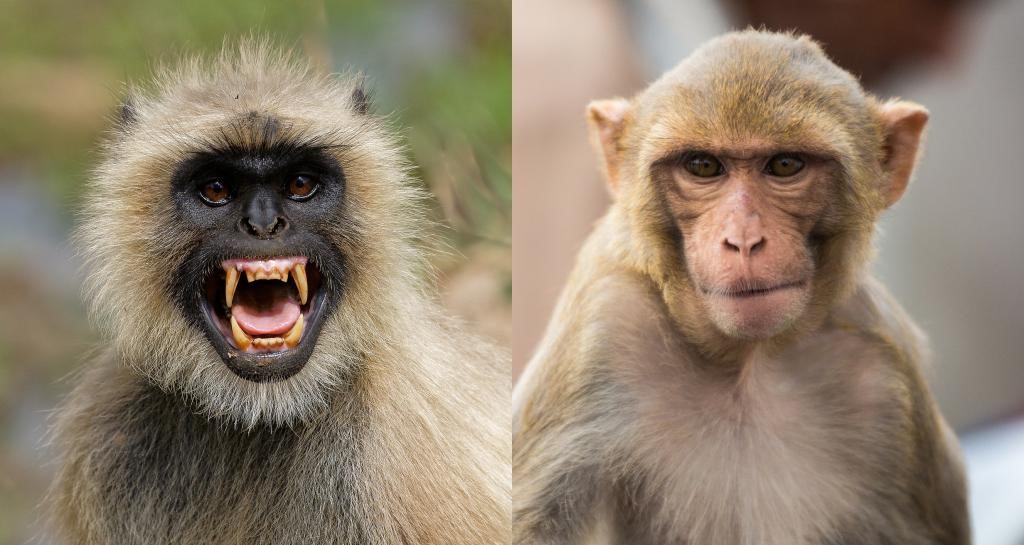Free Courses Sale ends Soon, Get It Now


Free Courses Sale ends Soon, Get It Now



Disclaimer: Copyright infringement not intended.
Context
Details
Scientific Basis
Ethical Considerations
Legal Implications
Alternative Solutions
About
Langurs
Physical Characteristics
Coloration: Langurs are typically gray or black in color, although some species may have white markings on their face or body.
Tail: They have long, slender tails that can measure as long as their bodies, often used for balance.
Face: Langurs have a relatively flat face with a narrow, pointed nose.
Eyes: Their eyes are relatively large, adapted for good vision.
Habitat
Behavior and Social Structure
Group Living: Langurs are highly social animals and live in groups called troops, which can consist of several individuals, including males, females, and young. These troops are organized around a dominant male.
Feeding: They are primarily herbivorous, feeding on leaves, fruits, and other plant material. Their complex stomachs help them digest tough plant fibers.
Communication: Langurs communicate through vocalizations, body language, and grooming. They have a wide range of vocalizations used for various purposes, such as warning of predators or maintaining group cohesion.
Reproduction
Langurs typically have a single offspring, although twins can occur occasionally. The gestation period is about 6-7 months. Young langurs are cared for by the entire troop, not just their mothers.
Conservation Status
The conservation status of langurs varies among species. Some are classified as vulnerable or endangered due to habitat loss and hunting for their fur or body parts.
Rhesus Macaques
Physical Characteristics
Coloration: Rhesus macaques typically have brown or grayish fur with a pinkish face.
Tail: They have a relatively short tail compared to langurs.
Face: Their faces are rounder and less pointed compared to langurs.
Eyes: Rhesus macaques have distinctive red or brown eyes.
Habitat
Rhesus macaques are highly adaptable and can be found in a wide range of habitats, including forests, grasslands, and urban areas. They are known for their ability to thrive in human-altered environments.
Behavior and Social Structure
Group Living: Like langurs, rhesus macaques are social animals and live in troops with a hierarchical structure. The dominant male leads the troop.
Feeding: Rhesus macaques are omnivorous and eat a varied diet, including fruits, leaves, insects, and small vertebrates.
Communication: They communicate using a combination of vocalizations, facial expressions, and body postures.
Reproduction
Female rhesus macaques have a menstrual cycle similar to humans. They typically give birth to a single offspring, with a gestation period of about 165-180 days. Young macaques are cared for by their mothers and other troop members.
Conservation Status
Rhesus macaques are listed as a species of "Least Concern" by the International Union for Conservation of Nature (IUCN). Their adaptability to various environments has contributed to their stable population.
Conclusion
The scientific evidence suggests that langurs and rhesus macaques can coexist peacefully in their natural habitats, challenging the assumption that langur cutouts and sounds are an effective means of deterring macaques. It is crucial to consider ethical and legal implications and explore alternative, science-based approaches to manage human-macaque conflicts while respecting the welfare of these animals.
|
PRACTICE QUESTION Q. Which of the following statements is/are correct? 1. Langurs (Semnopithecus entellus) are always aggressive towards rhesus macaques (Macaca mulatta). 2. Langurs and rhesus macaques often groom each other in the wild. 3. Rhesus macaques are larger in size than langurs. Options: A) Only Statement 1 is true. B) Only Statement 2 is true. C) Only Statement 3 is true. D) Statements 2 and 3 are true. Answer: B) |
© 2024 iasgyan. All right reserved